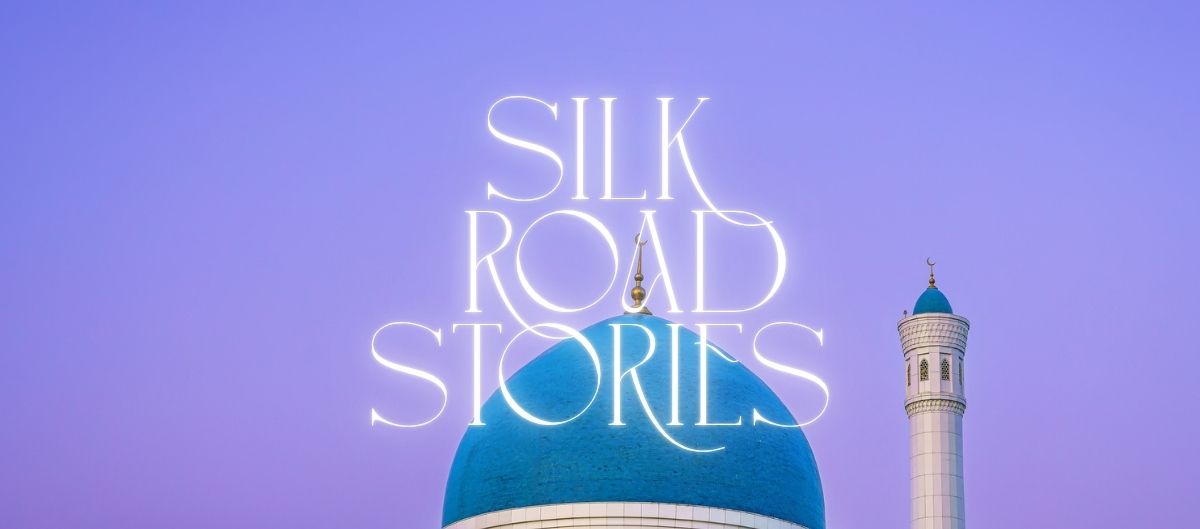Tashkent: A Vibrant Clash of Exotic Culture and Commerce!

The term “Silk Road” evokes images of camel caravans crossing deserts, laden with silk, spices, precious metals, and exotic goods, and was the intrigue for my 8,650 mile journey to Central Asia. That along with stuff of legend; the conquests of Alexander the Great, Genghis Khan and Tamerlane.

For over a thousand years, the Silk Road was one of the most influential networks in world history stretching from the ancient Chinese capital of Xi’an to the markets of the Mediterranean and even parts of sub-Saharan Africa, a distance of over 7500 miles covered by lengthy caravans of camels, horses and mules sometimes numbering eight or nine hundred!
My itinerary for Tashkent included the Khazrahti Imam Complex, religious center of the city and home to many exquisite mosques, monuments and madrasas (centers of Islamic learning similar to universities), Kaffal Shashi Mausoleum, Barak Khan Madrasah and Muyi Muborak Madrasa on the way to the area recognized as the heartbeat of Tashkent since the 15th century. The market!





The Chorsu Market is one of the most iconic and historic marketplaces in Tashkent. Here generations share life skills, survival, ingenuity, fraternity…and it is massive! Acres in fact. Open every day from sunrise until well past dark. Located in the heart of the Old City, near the Kukeldash Madrasah, Chorsu is not only a bustling center of daily commerce but also a living monument to Uzbekistan’s Silk Road heritage.





Today Tashkent, capital of Uzbekistan and largest city in Central Asia is less famous than cities like Samarkand and Bukhara but its strategic location made it one of the essential hubs of the Silk Road for centuries. The tradition continues.

Tashkent became a melting pot for diverse cultures. It was a contact point between Persian-speaking traders from the west, Turkic nomads from the steppes, Buddhist pilgrims traveling from India and China, and eventually Muslim scholars and merchants from the Middle East. Each added their cultural fingerprint to the art, architecture, science and literature of this vibrant city.




By the 14th century, the city came under the influence of Timur (Tamerlane), the Turco-Mongol conqueror who made nearby Samarkand the capital of his empire.

While Tashkent was not Timur’s main city, it remained an important regional center. Throughout many changes, it retained its essential character as a trade center, where goods from China and India could be exchanged with Persian textiles, Russian furs, or European coins.

By the 19th century, the Silk Road faded in importance. Tashkent transitioned from a Silk Road city to a geopolitical prize in the game between Russian and British empires. Newly independent from Soviet control since 1991, the Republic of Uzbekistan of Tashkent remains a unique blend of the ancient and the modern, where Islamic architecture stands beside Soviet-era buildings and modern skyscrapers.

Today, visitors to Tashkent can explore museums that showcase Silk Road artifacts, stroll through traditional bazaars that still carry the spirit of international trade, and visit architectural monuments that speak to the city’s multicultural past.
Tashkent is more than a capital city; it is a living monument to the Silk Road, a reminder that history’s greatest stories were written not just by conquering empires.
Related Posts
Rio de Janeiro and the Girl from Ipanema: Where Music Meets the Sea
Rio de Janeiro is more than a city—it’s sun-soaked poetry. From the iconic Christ the …
May 3, 2025Visit the Most Beautiful Bookstore in the World
It’s called El Ateneo, Spanish for “The Athenaeum”, a place associated with learning, the arts …
April 26, 2025

Leave A Comment